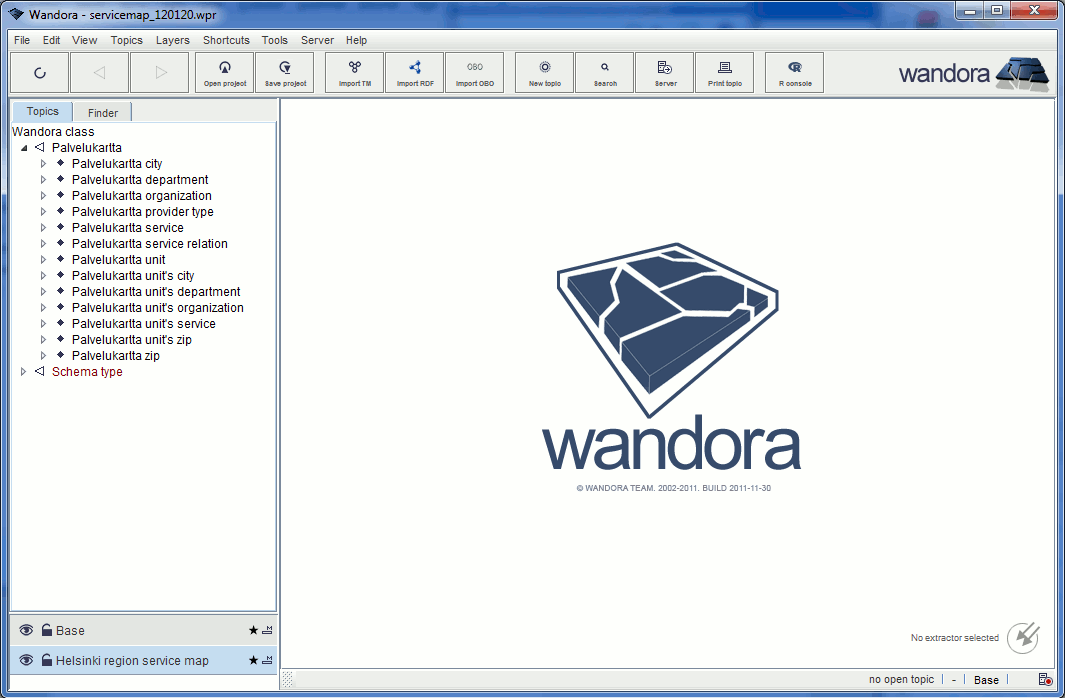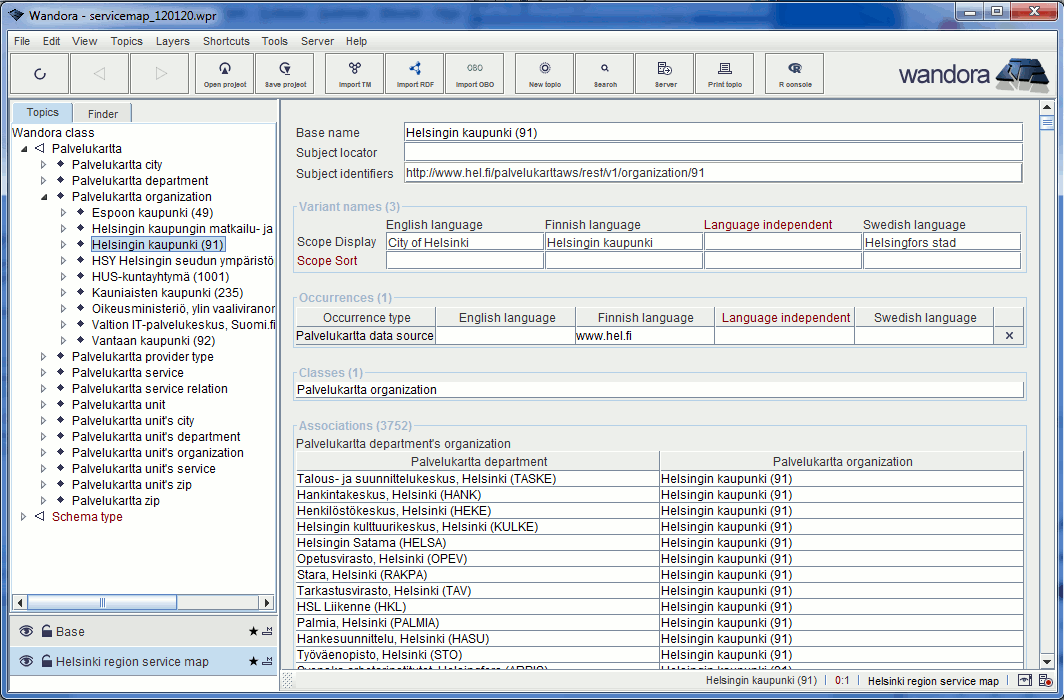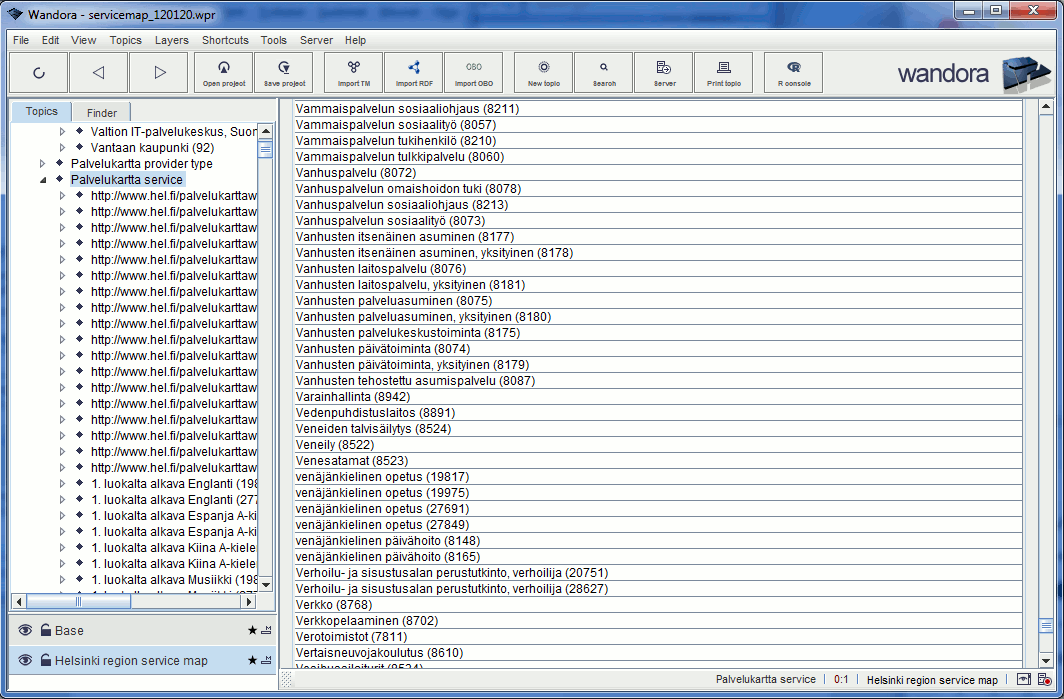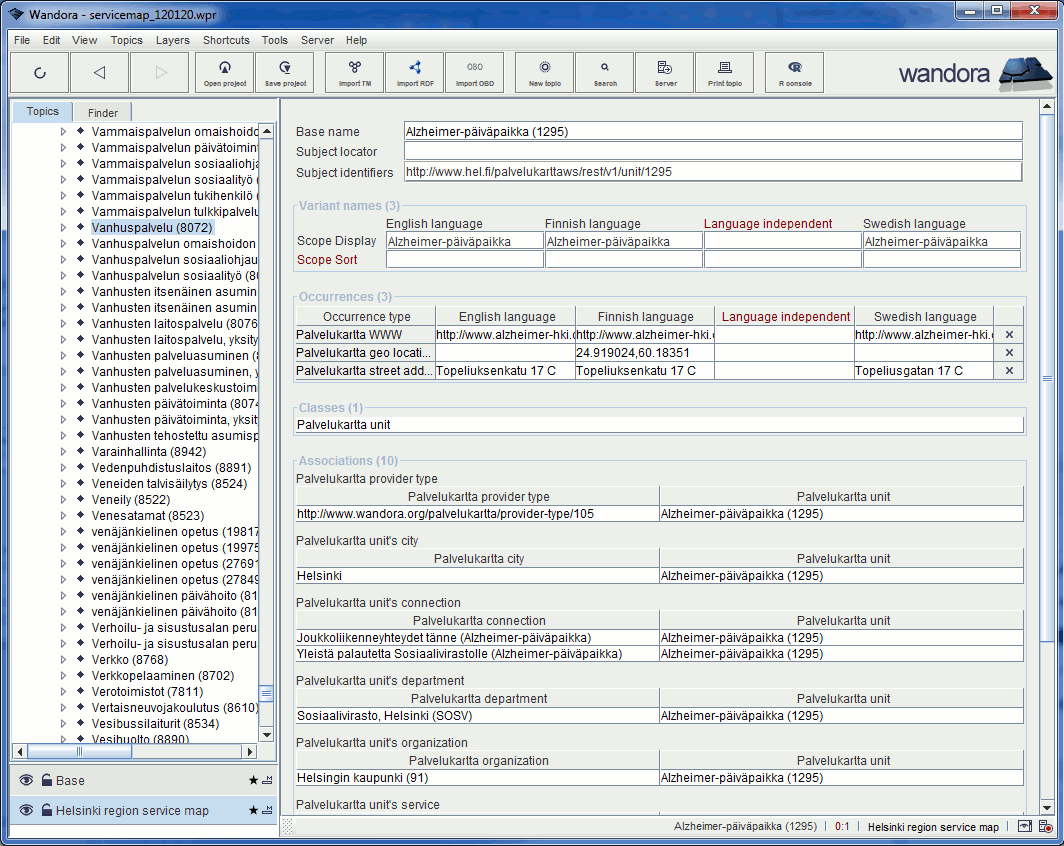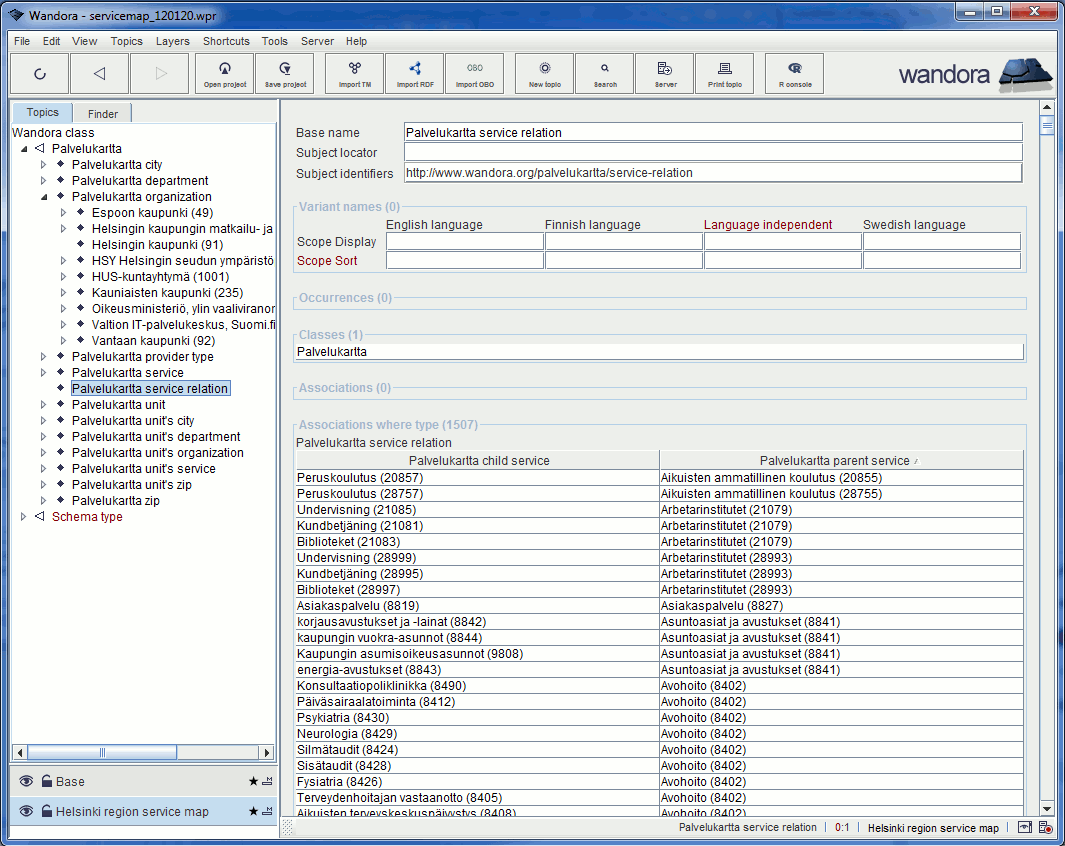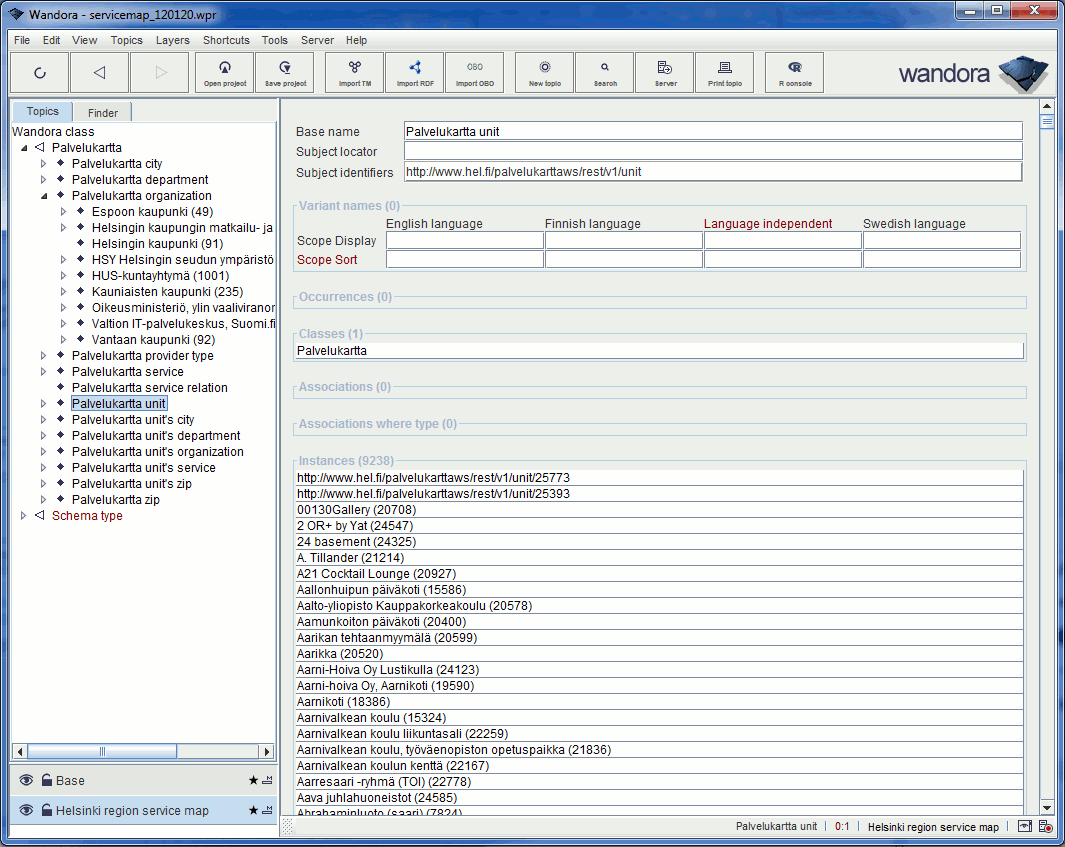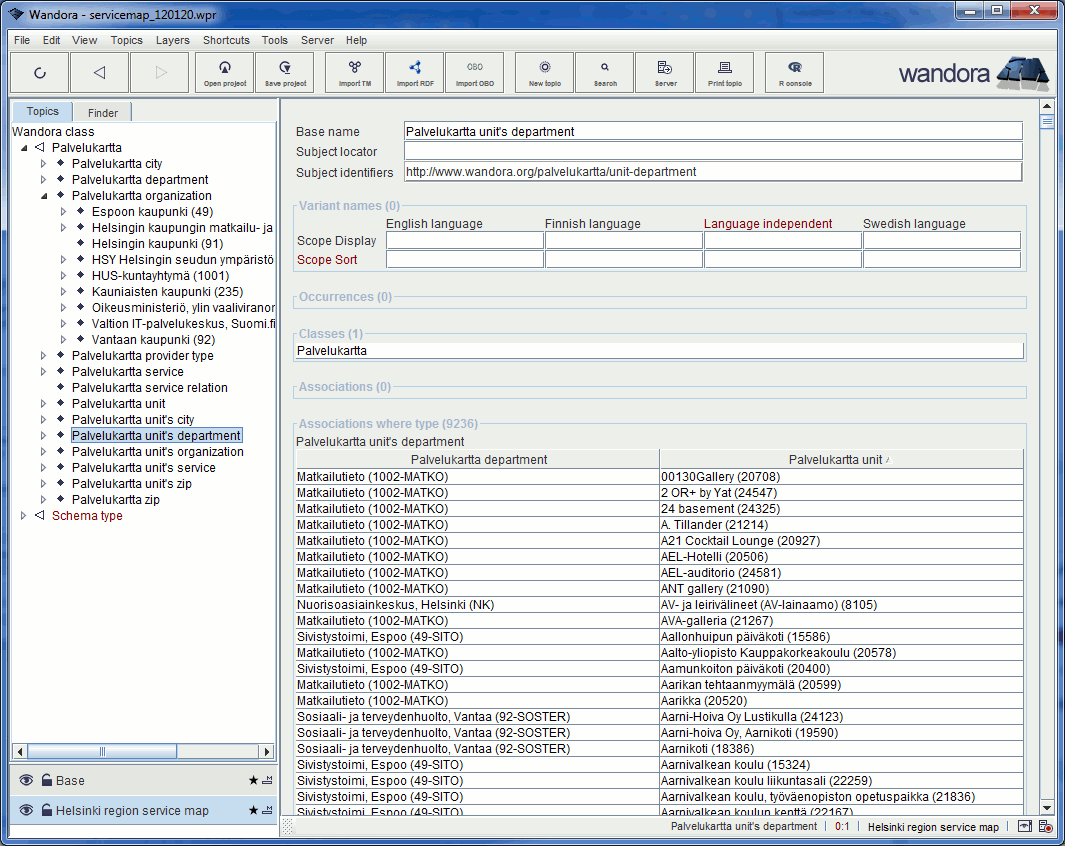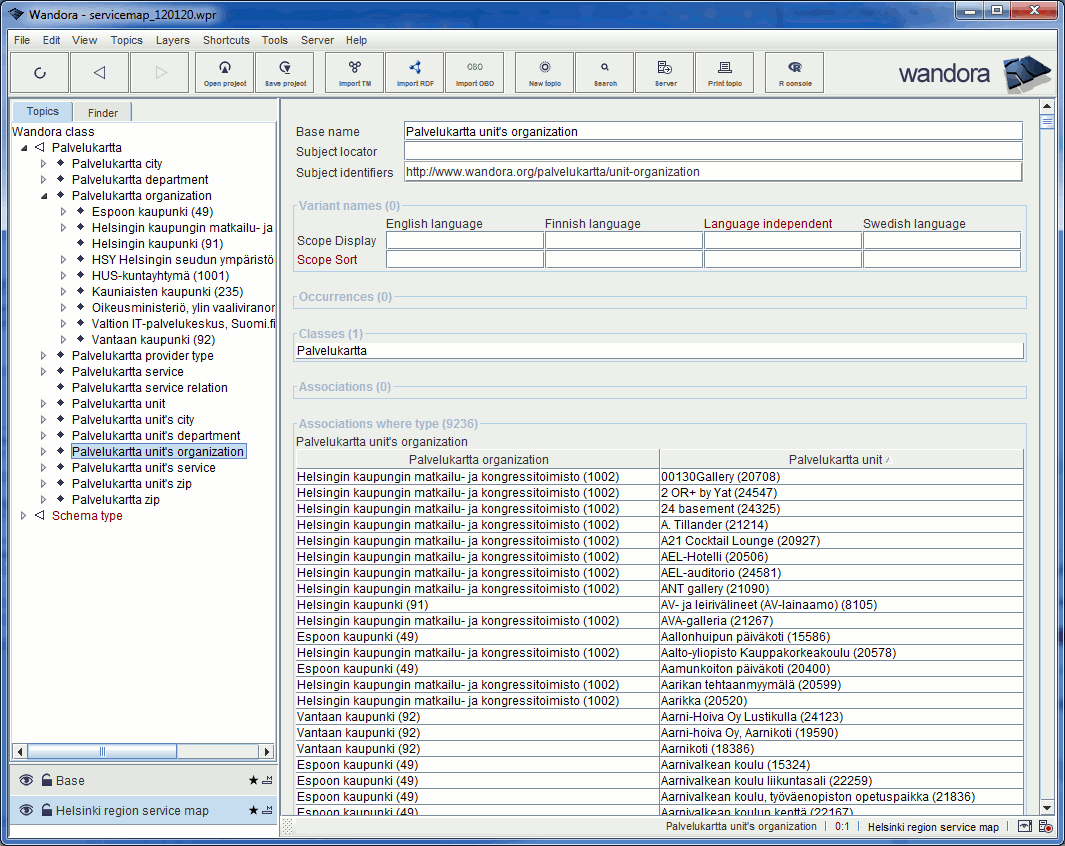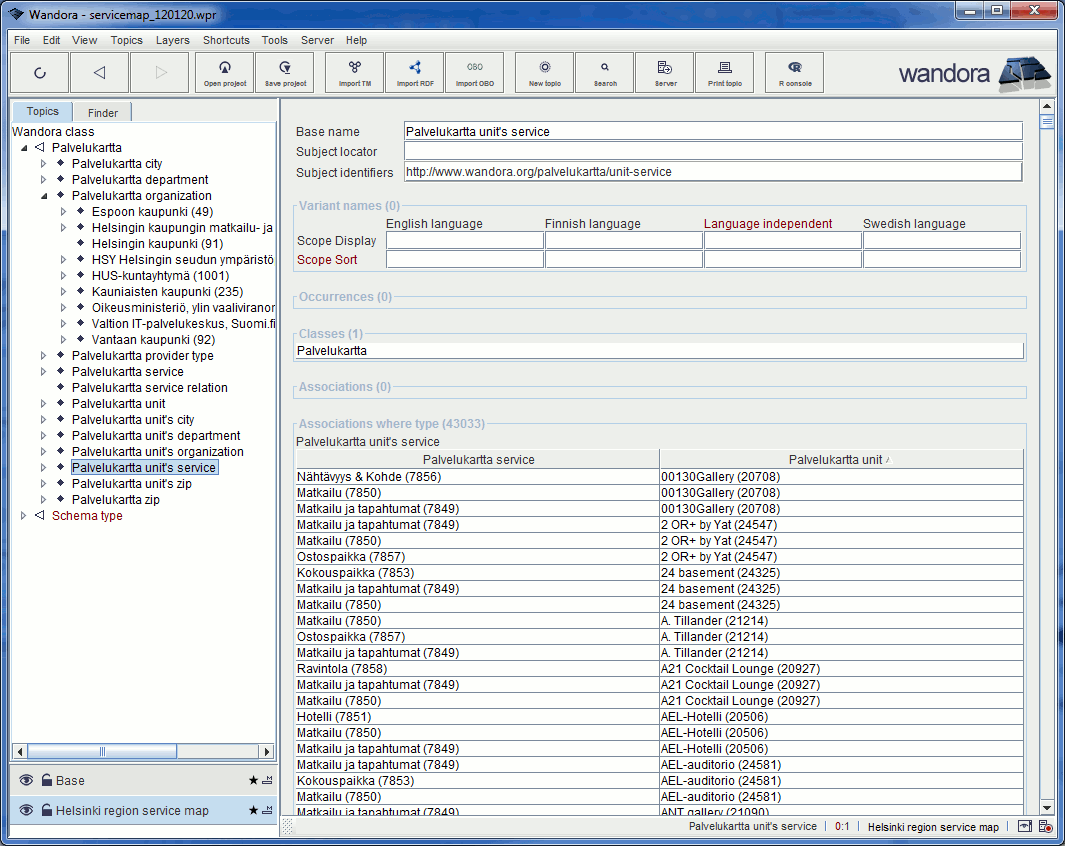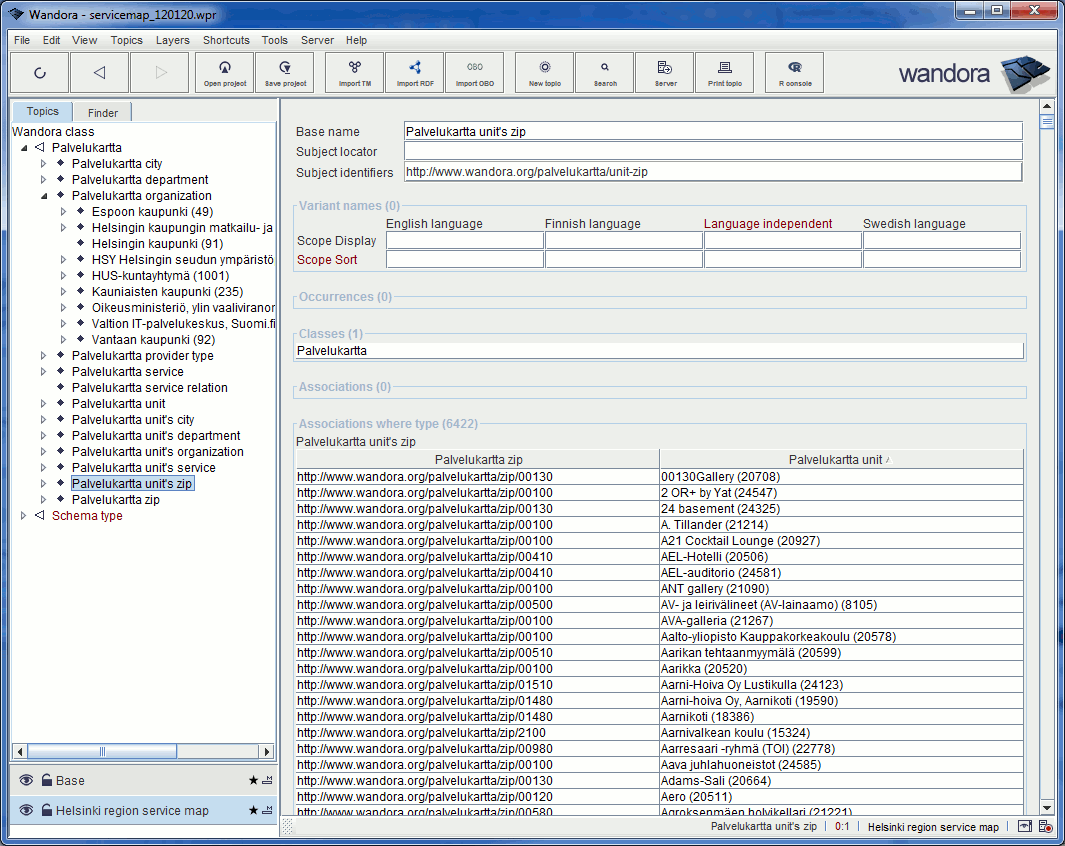The Service Map - Helsinki region public services
The Service Map (Palvelukartta in Finnish) is an open web service providing information of community services in Helsinki, Espoo, Vantaa and Kauniainen cities. All cities locate in southern Finland and are sometimes called as a Helsinki region cities. Helsinki is a capital of Finland. Public service information includes nearly all services and service units of the community, for example
- Public libraries in Helsinki region
- Schools in Helsinki region
- Healthcare units in Helsinki region
- Public toilets in Helsinki region
- Voting locations in Helsinki region
- Museums in Helsinki region
- And many more...
All service units have a GPS location, keywords describing the services provided by the unit, service department, city and city region the unit locates. Unfortunately the language of the information is Finnish.
The Service Map has an open REST interface (introduction in Finnish). Use lisence of the REST interface allows free information distribution and usage and remixing both in commercial and uncommercial context if content author,
Helsingin kaupungin toimipisterekisteri/ http://www.hel.fi/palvelukartta/
is credited. Information user should acknowledge that the content author doesn't give any kind guarantee related to the information provided by the service map. Also, content author can not be used to advertise any application or service using information provided by the service. Although the documentation doesn't explicitly say it, the license of REST interface resembles very closely Creative Commons Attribution 2.0 Generic.
Contents |
Topic map conversion of The Service Map
Wandora Team has added Wandora a feature (not released yet) that can be used to extract information provided by The Service Map REST interface. Wandora Team publishes a complete extraction of The Service Map as an interesting piece of information and as a demonstration of the extractor. Reader should acknowledge that extracted topic map is a snapshot of information provided by the REST interface at the time extraction was performed.
Download the topic map conversion of The Service Map
Topic map conversion of The Service Map is available as a Wandora project file and as a XTM 2.0 topic map serialization. Topic map conversion was performed 2012-01-20.
- Wandora project file (4117 KB)
- XTM topic map (4723 KB, uncompressed 78 MB)
Statistics
The XTM serialization of The Service Map has
- 26929 topics
- 107516 associations
- 26635 topic base names
- 30818 subject identifiers
- 0 subject locators
- 51681 occurrences
- 8 distinct topic classes
- 10 of distinct types of associations
- 12 distinct roles in associations
- 26896 distinct players in associations
Examples
Next screen captures have been taken from Wandora once user has opened The Service Map project file dated 2012-01-19. First screen capture reviews top level categories of the topic map. Wandora class has a subclass called Palvelukartta which connects all service map topics to Wandora's base ontology.
Next screen capture reviews service map organizations. Service map organizations are instances of Palvelukartta organization topic. Addition to Helsinki, Espoo, Vantaa and Kauniainen cities, the service map includes service information related to Helsinki City Tourist & Convention Bureau, HSY Helsinki Region Environmental Services Authority, HUS Hospital District, Ministry of Justice, Election Unit and State IT Service Centre.
At this point reader should notice that service map's topic basenames are usually in Finnish. However, some topics have English and Swedish variant name.
Service keywords of the service map are instances of Palvelukartta service topic. The service map has 1536 keyword topics that are used to describe units providing services.
Looking at a single service keyword topic reviews all units that give the service. For example, screen capture below reviews service keyword topic Service for the elderly. Service map includes 363 units that give services for the elderly. Such units include Day Activity Centre Näpsäkkä, Puistola Service House and Nursing home Iltatähti for example. Addition to units giving the service, looking at a single service keyword topic reviews all sub/superclasses of the service keyword using child/parent relation.
Next screen capture reviews one unit that provides services for the elderly. Reviewed topic is Alzheimer-päiväpaikka (1295). Topic contains three occurrences: Unit's WWW address, unit's geo location (GPS coordinates) and unit's street address. Unit topic is associated to unit's city topic, department, organization, service keywords and zip number. Provider type association describes the category of unit. Provider types are described in the documentation of the service map REST API.
Palvelukartta service relation topic is an association type for service keyword child/parent relation.
Palvelukartta unit is a type topic that collects all service units.
Palvelukartta unit's department is an association type for unit-department relation.
Palvelukartta unit's organization is an association type for unit-organization relation.
Palvelukartta unit's organization is an association type for unit-organization relation.
Palvelukartta unit's service is an association type for unit-service keyword relation.
Additional notes
- Wandora's Oma kaupunki extractor can be used to build a topic map of commercial services of Helsinki region. It would be quite easy and interesting to mashup the information provided by the Oma kaupunki extractor and the topic map conversion of The Service Map.
- One evident use case for this kind of Service Map extractor is to create a temporary views of services provided by the community. Not once but regularly, say once a month. And when you have recorded the service information for several years, once a month, it would be very interesting to see how services have evolved. The evolution information could be used as a tool to develop services further. The service development has be self conscious and it can't be self conscious if it doesn't know what has been.
